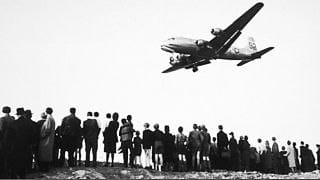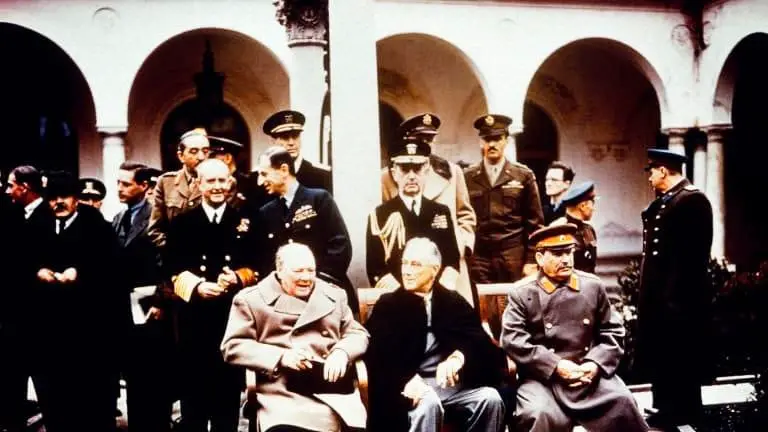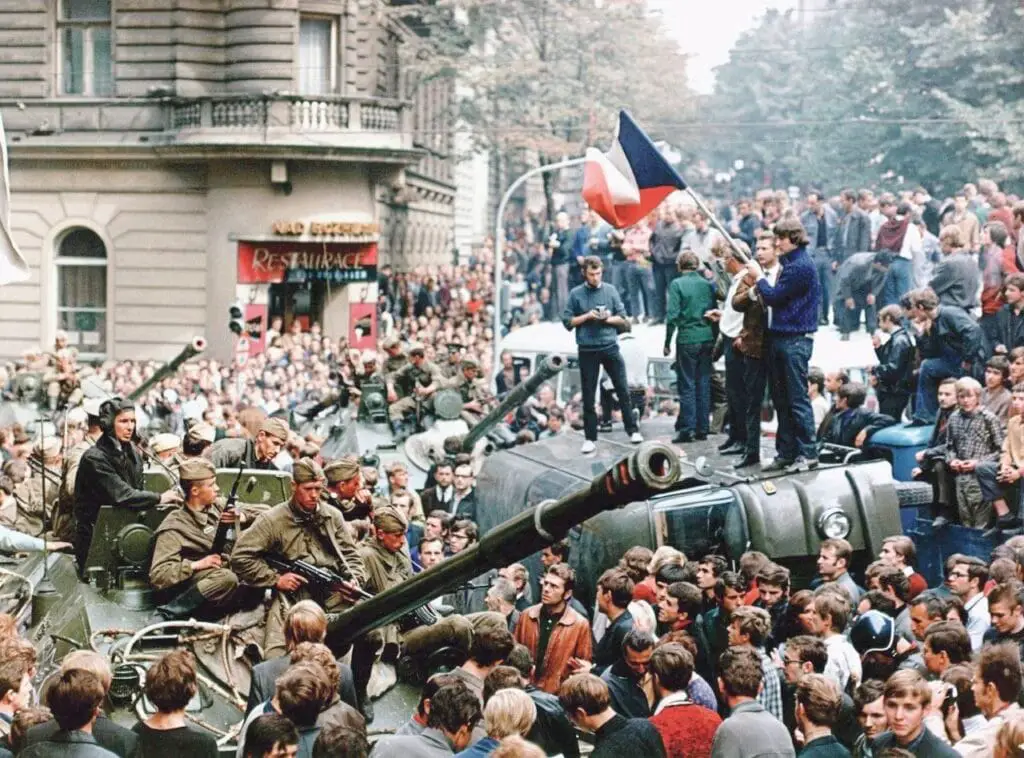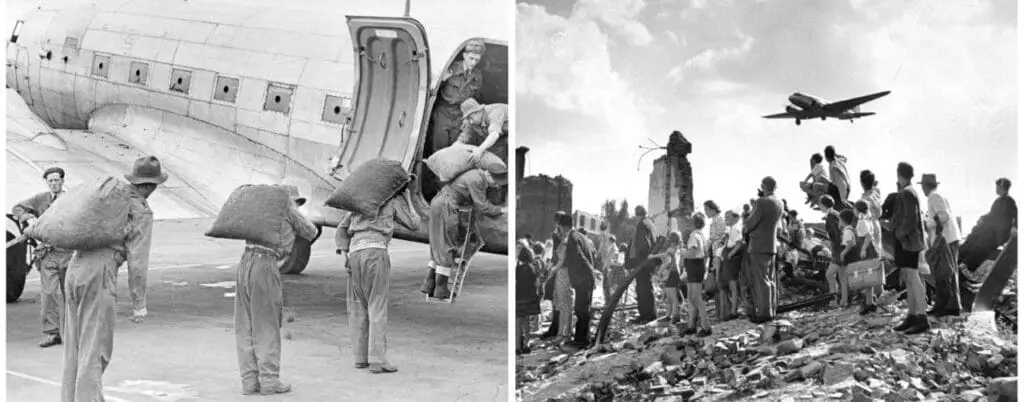Discuss The Various Phases of Cold War
Phases of the Cold War
The Cold War, spanning from 1945 to 1991, evolved through various phases marked by fluctuating levels of tension between the United States and the Soviet Union. These phases include periods of intense conflict, military buildup, diplomatic engagement, and eventual dissolution of the Soviet Union. Below is a breakdown of the key phases of the Cold War:
1. The Origins of the Cold War (1945–1949)
This phase marks the immediate aftermath of World War II, where tensions between the U.S. and the Soviet Union, who had been allies during the war, quickly grew.
Key Events:
- Yalta and Potsdam Conferences (1945): The division of Europe and disagreements over post-war governance, particularly in Eastern Europe, sowed the seeds of the Cold War.
- Soviet Expansion: The USSR established control over Eastern European nations, setting up communist regimes, which alarmed the U.S. and Western Europe.
- Truman Doctrine (1947): The U.S. declared its policy of containment, vowing to support nations threatened by communism, particularly in Greece and Turkey.
- Marshall Plan (1948): The U.S. provided economic aid to rebuild Western Europe and prevent the spread of communism.
- Berlin Blockade and Airlift (1948–1949): The Soviet Union blockaded West Berlin, prompting the U.S. and its allies to supply the city by air for over a year.
Characteristics:
- Deepening ideological divide between the capitalist West and communist East.
- The beginning of nuclear rivalry, as both superpowers began to compete for global influence.

2. Escalation and Militarization (1949–1962)
This period was marked by the global expansion of Cold War conflicts and an intensifying arms race.
Key Events:
- Soviet Nuclear Test (1949): The Soviet Union successfully tested its first atomic bomb, ending the U.S.’s nuclear monopoly.
- NATO Formation (1949): The U.S. and its allies created the North Atlantic Treaty Organization (NATO), a military alliance aimed at countering Soviet aggression.
- Warsaw Pact (1955): The Soviet Union responded with its own military alliance with Eastern Bloc countries.
- Korean War (1950–1953): A hot conflict in Asia, with the U.S. and its allies fighting on behalf of South Korea against communist North Korea, supported by China and the Soviet Union.
- Vietnam War: This phase saw the beginnings of U.S. involvement in Vietnam to counter the spread of communism in Southeast Asia.
- Space Race (1957): The launch of the Soviet satellite Sputnik accelerated U.S.-Soviet competition in space technology, symbolizing the technological and ideological rivalry.
- Cuban Missile Crisis (1962): The world came closest to nuclear war when the U.S. discovered Soviet missiles in Cuba. A tense standoff followed, ending with the removal of missiles in exchange for U.S. concessions.
Characteristics:
- High tension with proxy wars in Asia (Korea, Vietnam) and an arms race.
- Establishment of mutually assured destruction (MAD) as both superpowers developed nuclear arsenals capable of annihilating each other.
- Cold War entered the global arena, with both sides competing for influence in Asia, Africa, and Latin America.

3. Détente and Diplomatic Engagement (1962–1979)
After the Cuban Missile Crisis, both superpowers recognized the dangers of direct confrontation and began a period of reduced tensions known as détente.
Key Events:
- Partial Nuclear Test Ban Treaty (1963): Following the Cuban crisis, both superpowers agreed to limit nuclear testing.
- Vietnam War Escalation and Withdrawal: The U.S. deepened its involvement in Vietnam during the 1960s, but by the 1970s began to withdraw following the Paris Peace Accords in 1973.
- SALT I (Strategic Arms Limitation Talks) (1972): The U.S. and the Soviet Union signed their first agreement to limit strategic nuclear weapons.
- Nixon’s Visit to China (1972): The U.S. sought to ease tensions with China, a communist nation, to shift the balance of power against the Soviet Union.
- Helsinki Accords (1975): These agreements focused on reducing Cold War tensions and improving East-West relations, including the recognition of post-World War II borders in Europe.
Characteristics:
- A period of relative stability and diplomacy, focusing on arms control and coexistence.
- Although proxy wars continued, the risk of direct superpower conflict decreased.
- Détente allowed for economic and cultural exchanges between the East and West.

4. The Second Cold War and the Rise of Tensions (1979–1985)
Détente began to unravel by the late 1970s, with the Cold War entering a more confrontational phase once again, known as the Second Cold War.
Key Events:
- Soviet Invasion of Afghanistan (1979): The Soviet Union invaded Afghanistan to support its communist government, prompting the U.S. to support Afghan resistance fighters (mujahideen), exacerbating Cold War tensions.
- Reagan Doctrine: U.S. President Ronald Reagan took a hardline stance, increasing defense spending and promoting a policy of rollback, which aimed to reverse Soviet influence worldwide.
- Strategic Defense Initiative (SDI): Reagan proposed a controversial missile defense system, also known as “Star Wars,” to protect the U.S. from Soviet nuclear attacks.
- Polish Solidarity Movement: In Poland, the rise of the anti-communist Solidarity movement challenged Soviet control in Eastern Europe.
Characteristics:
- The arms race accelerated again, with military buildup and increased defense spending by both superpowers.
- The conflict in Afghanistan became the Soviet Union’s version of the U.S. experience in Vietnam, with high costs and no clear victory.

5. End of the Cold War (1985–1991)
This final phase of the Cold War saw the internal collapse of the Soviet Union, driven by economic stagnation, political reforms, and popular discontent in Eastern Europe and the Soviet republics.
Key Events:
- Gorbachev’s Reforms: Soviet leader Mikhail Gorbachev introduced glasnost (openness) and perestroika (restructuring) to revive the Soviet economy and promote political transparency. However, these reforms inadvertently weakened the Soviet grip on power.
- Eastern European Revolutions (1989): Gorbachev’s refusal to use force to maintain control led to the collapse of communist regimes in Poland, Hungary, East Germany, and other Eastern Bloc countries.
- Fall of the Berlin Wall (1989): This symbolized the end of the Cold War division in Europe and paved the way for German reunification.
- Dissolution of the Soviet Union (1991): A failed coup by hardline communists, coupled with growing demands for independence from Soviet republics, led to the breakup of the Soviet Union. On December 25, 1991, the Soviet Union officially dissolved, marking the end of the Cold War.
Characteristics:
- The collapse of communist regimes in Eastern Europe and the breakup of the Soviet Union brought about the end of the ideological and military rivalry.
- Unipolar world: The U.S. emerged as the sole global superpower, leading to a new international order.
Conclusion
The Cold War evolved through a series of phases, ranging from the post-WWII rivalry to a period of détente and diplomatic engagement, followed by renewed tensions and the eventual collapse of the Soviet Union. Each phase was shaped by the superpowers’ shifting strategies, ideological conflicts, and geopolitical events, ultimately culminating in the end of the Cold War and the emergence of a new global order.
Share this content:
Leave a Reply